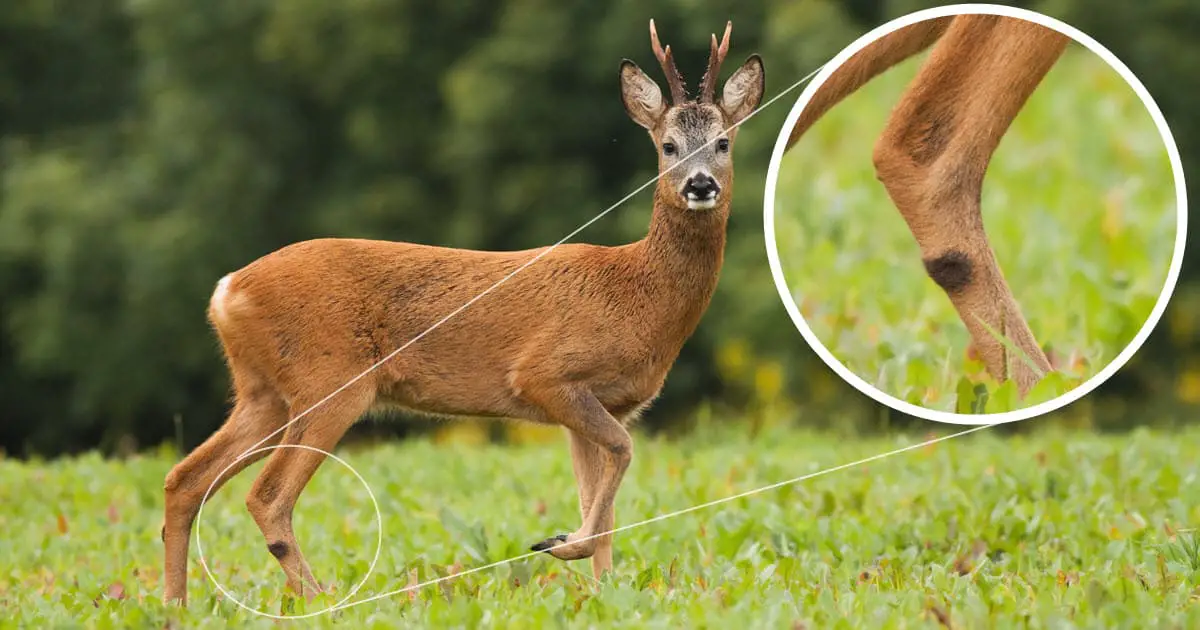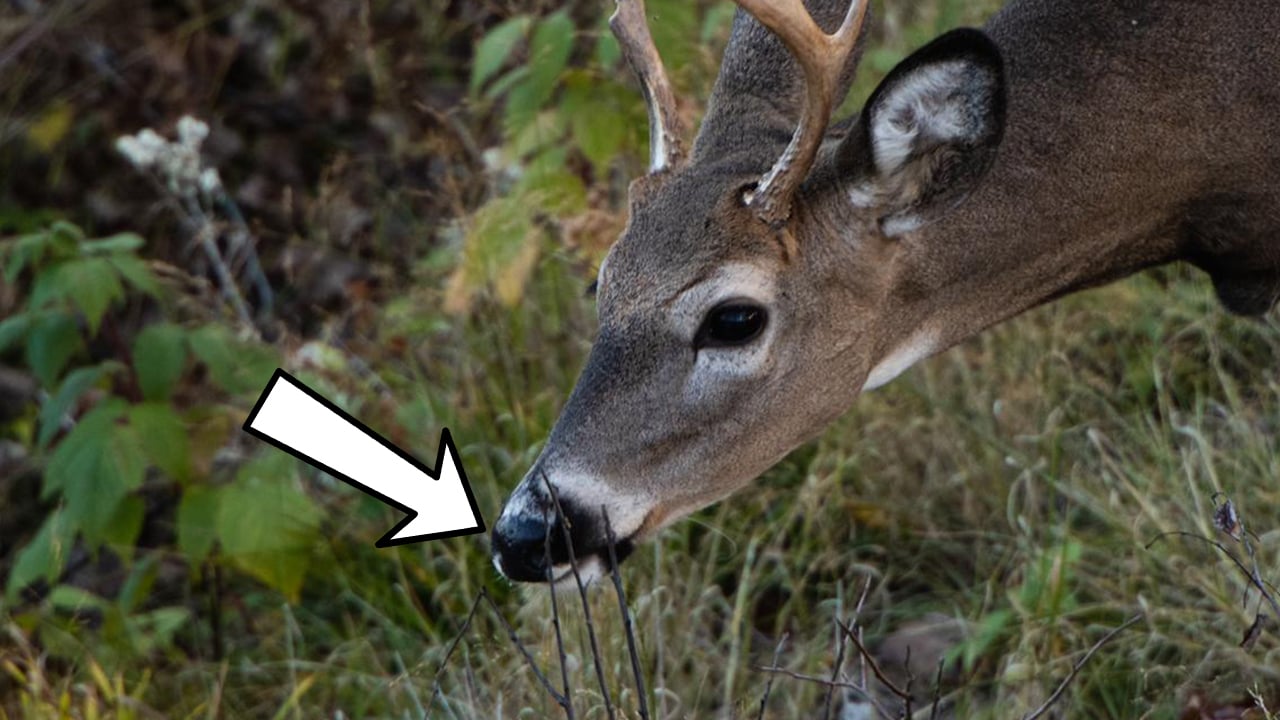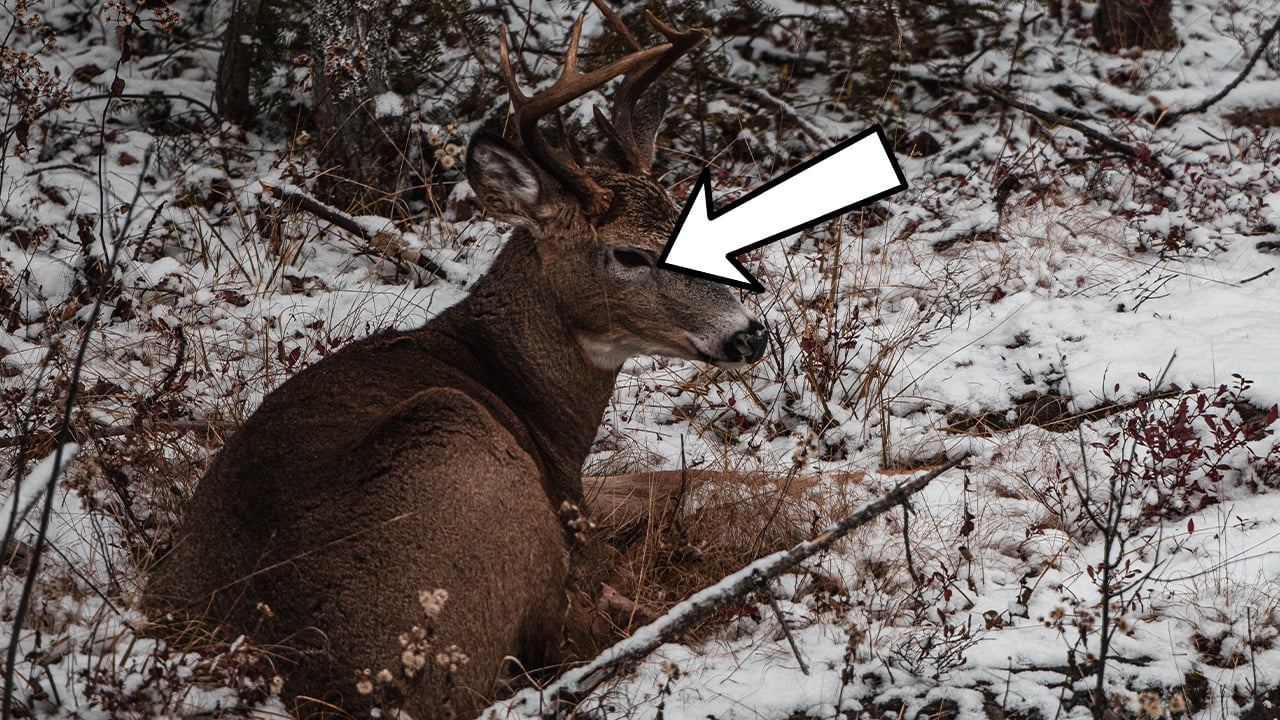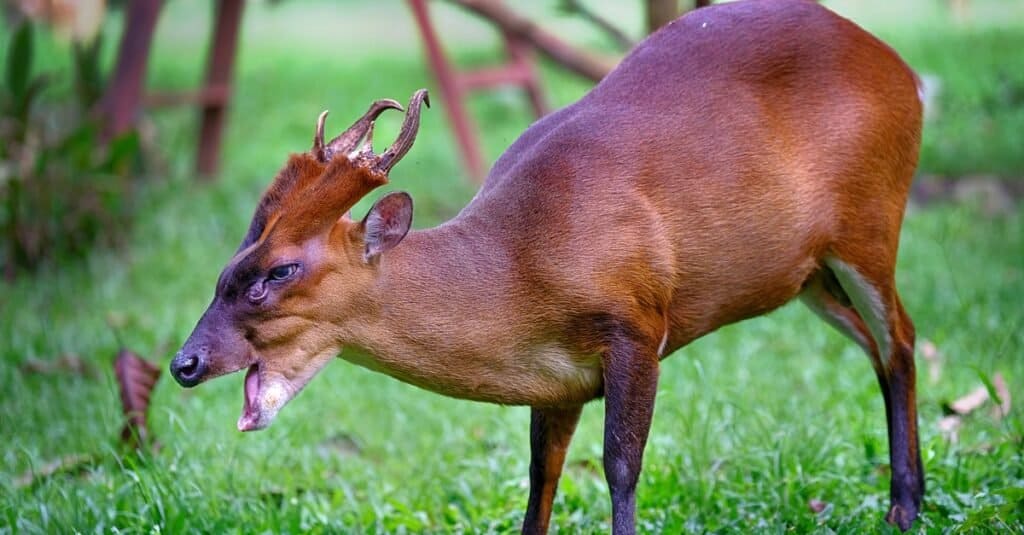
Muntjac Deer Scent Glands and their Role in Survival An InDepth Look
The exact mix of bacteria is unique from deer to deer, which may give each deer a unique scent that other deer can recognize. This scent is likely deposited in scrapes when a deer rub-urinates and urine flows over the tarsal gland onto the ground. It is likely tarsal-gland scent carries information about the dominance status, sex, health.

Tarsal Glands on Deer (what we know, explained) World Deer
Deer use the scent from this gland to keep a close eye (nose) on their immediate surroundings just if there are any intruders. Metatarsal Gland If you take the time to examine the hind legs, you will see that it has a white patch of hair just about six inches above its hooves.

The barking deer
White-tailed deer have at least seven different glands found in specific areas of their bodies. While scientists have speculated on the purpose of each one, the truth is researchers know relatively little about what role (if any) each gland plays in deer communication.

7 Whitetail Deer Glands and What They Do
What role do the glands on a deer perform? Deer hunters are likely familiar with the tarsal gland and the communication role it plays during the rut (breeding period), but did you know there are actually 6 other glands found on the white-tailed deer, many of which are used for communication?

7 Whitetail Deer Glands and What They Do
Emily Kantner Jan 10, 2022 Most whitetail hunters have at some point inhaled the strong stench wafting from a rutting buck's tarsal glands. While they may recognize it as the calling card of a mature deer, that's about the extent of most folks' olfactory understanding.

Body Language How Whitetails 'Talk' With Their Glands HuntStand
A deer's world is highly influenced by smells produced by internal and external glands. Each plays a specific and essential role in deer communication. Their olfactory messages act to alert, calm, frighten, identify gender and rank, establish social structure, revealing breeding status and health condition and aid in day-to-day survival.

Muntjac Deer Have Bizarre Flaring Scent Glands On Their Face IFLScience
Scent gland are exocrine glands found in most mammals. They produce semi-viscous secretions which contain pheromones and other semiochemical compounds. These odor-messengers indicate information such as status, territorial marking, mood, and sexual behaviour. The odor may be subliminal—not consciously detectable.

Everything You Want To Know About Muntjac Deer Face Scent Glands AZ
Location: Between the toes. [5] Nasal Gland Location: Inside the nostrils. [6] Preorbital Gland Nobody really knows. While it could play a role in marking rubs. Location: In front of the deer's eyes. [7] Forehead Gland While Marks rubs and other vegetation with the scent of a dominant, mature buck. Location: Between the eyes and the antler bases.

Muntjac Deer Have Bizarre Flaring Scent Glands On Their Face IFLScience
Location: Between the toes. [5] Nasal Gland Not sure. Location: Inside the nostrils. [6] Preorbital Gland Nobody really knows. It could play a role in marking rubs. Location: In front of the.

The Tusk And Eye Scent Gland Of A Muntjac Also Known As A Barking Deer
This diminutive deer has glands that can open so wide; they can actually turn inside out.

Detail of the Eye of a Muntjac Deer and Its Ocular Scent Gland Stock
75 of The Top 100 Retailers Can Be Found on eBay. Find Great Deals from the Top Retailers. eBay Is Here For You with Money Back Guarantee and Easy Return. Get Your Deer Today!

Deer Glands Understanding Deer Glands & Deer Scents
The Reeves's or Chinese muntjac, Muntiacus reevesi, is a type of deer native to southeastern China and Taiwan. However, its range now reaches far beyond that, as it was introduced by humans to.

Scent glands and nonintegumentary tissues sampled from mule deer and
It has a light color and a tufted appearance. The tarsal glands are positioned so that the deer's urine can run down against them. When the glands are producing secretions, they will mix with the urine and create the deer's individual scent. Do Both Bucks and Does Have Tarsal Glands?

膻_360百科
5. Preorbital. It's unclear if they preoribital glands, located at the bases of the eyes, release scent or merely lubricate the eyes. 6. Nasal Glands. These facial glands may lubricate the nose to help it function better. 7. Interdigital. These between-the-toes glands produce rancid compounds that smell like sour milk.

Whitetail Deer Glands and Scent Communication YouTube
Awesome prices & high quality here on Temu. New users enjoy free shipping & free return. Don't swipe away. Massive discounts on our products here - up to 90% off!
Glands and Deer Scent
The Muntjac deer's scent glands play a crucial role in their survival. These glands have evolved over time to help the deer communicate with other members of their species, mark their territory and avoid predators. Additionally, these scent glands are used during mating season to attract potential mates. Understanding the importance of these.